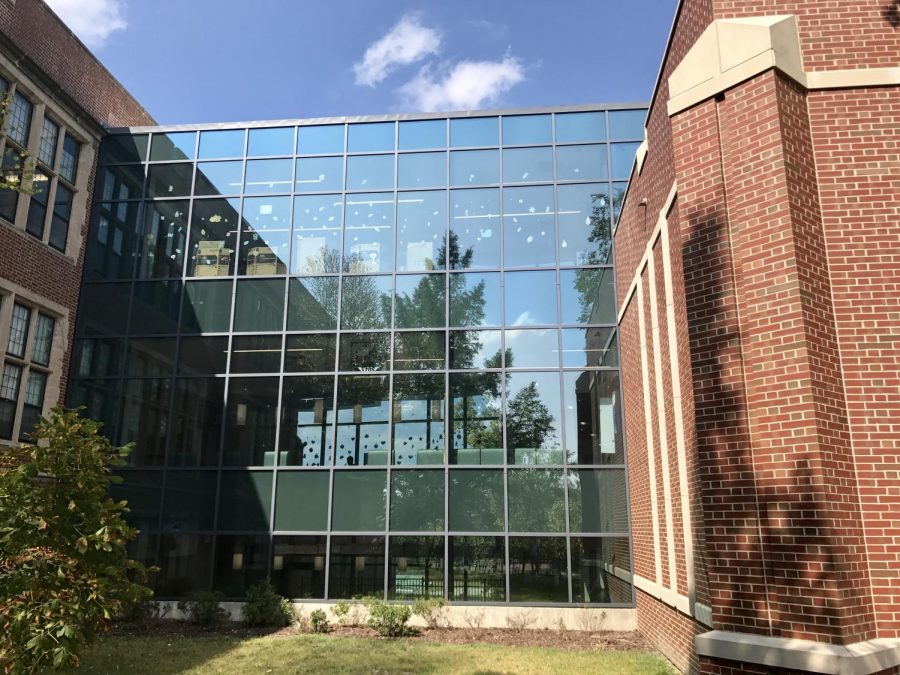New Section of Building Results in Some Bird Deaths, West Works to Prevent Future Deaths
Since its completion, the new science wing – with its modern resources, additional space, and creative design – has provided benefits to students and faculty alike. However, it has had one unexpected downside: several birds have flown straight into the glass bridge.
Glenbard West is not the only building to face this problem, as glass walls everywhere have proven to be disorienting for birds. As Mr. Lindberg, the sponsor of Eco Club and an APES and biology teacher, comments, “The reflection of the trees and the surrounding area was causing the birds to kind of fly into the windows.” In fact, the American Bird Conservancy claims that up to one billion birds are killed flying into glass in the U.S. alone.
Some buildings and homes have certain bird tape or other products designed to help save birds. Mr. Lindberg noted that “Ms. Oberg, the Assistant Principal of Operations, received some UV reflective decals that go on the inside of the window.” This helps to reduce the reflection on the window, but has not completely solved the issue, possibly because “at the right angle you could actually see through the windows,” so the reflection is not the problem at these places.
Ms. Oberg has been happy to help with the problem, and like Mr. Lindberg, believes the decals “have cut down the amount of birds flying into the window.”
Another solution intended to work with the reflective decals is to simply tape colorful shapes on the window. These randomly assorted shapes could break up the pattern of the glass and warn approaching birds about the presence of the wall. In order to make this more aesthetically pleasing, some art classes, depending on availability in their schedule, may design new shapes which will be attached to the window by suction cups. Although this will require much effort to assemble the 300 suction cups, design the shapes,and put them up on the windows, it has the potential to “beautify the window but also make it more safe for birds,” according to Mr. Lindberg.
Mrs. Doyle, an art teacher here at Glenbard West has said that she would be happy to help if she has a chance but would need more information: “It’s something I may be able to do, but I can’t commit without knowing what I’m supposed to do.”
So far, these solutions have had mixed results. This fall, there have been fewer birds “outside the length of the bridge down by the base of the windows,” but there is a part of the window that cannot be accessed due to a stairwell that has already caused two bird deaths. Altogether, Mr. Lindberg has “collected eight or nine birds in the freezer, but it is likely that this is a small fraction of what’s being killed by the windows.” Mr. Lindberg says the reason for storing the birds in the freezer is “partly to keep them as artifacts for education and to inspire solutions to environmental problems.”
The shapes seem to have been effective thus far in diverting birds, but it is possible that they “will lose their suction and fall off” and some birds have collided into the uncovered areas of the window. However, Mr. Lindberg is confident a permanent solution will be reached, as “the administration has an interest in preventing bird deaths.” Most of the bird deaths have occurred during the birds’ migration season, fall, so it is important that this issue is resolved quickly.
For any students interested in protecting these birds, Mr. Lindberg recommends joining Eco Club or Students for the Protection of Animals. Members of these clubs can help work through potential solutions, monitor the effectiveness of these solutions, or help assemble the suctions cups: “We have 300 of them, so we got to put them up!”





